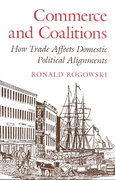3.1 Required steps When completing the industry analysis you should assume that firms are engaged in Cournot Competition. Steps 1 to 4 apply to the market in the absence of a merger. Step 1: Using the information provided in the scenario, derive a profit function for a typical firm in the industry. Use (3,... to denote the quantity produced by this firm, and X to denote the combined production of the remaining two firms. (6 marks) Step 2: Derive the best-response function for the typical firm. (5 marks) Step 3: Find the equilibrium quantity for the typical firm, the equilibrium market quantity, and the equilibrium market price. (7 marks) Step 4: Find the equilibrium profit for the typical firm and the equilibrium consumer sur- plus. (6 marks) When writing your brief you should assume that steps 3 and 4 describe the existing equi- librium in the market. Now suppose that the merger takes place and that the merged firm achieves the expected efficiencies. (Note that Aggregate |nc.'s costs are not be affected by the merger.) Step 5: Find the new equilibrium quantities and price for the market. Use GA to denote the quantity produced by Aggregate Inc., and 0,; to denote the quantity produced by the merged firm, BigCon. (18 marks) Step 6: Find the new equilibrium firm profits and consumer surplus. (8 marks) When writing your bn'ef steps 5 and 6 represent your assessment of the likely market conditions if the merger is permitted to proceed. Pre-mixed concrete is an important input for the constmction industry. Concrete cannot be stored or transported over long distances as it begins to set after only a few hours. For this reason, only the three local firmsAggregate |nc., Big Industries and ConCorpare in a position to compete in the market. Moreover, the capital and regulatory requirements for constructing a new concrete plant are substantial. creating an effective barrier to entry. Pre-mixed concrete is regarded as a homogeneous good by the construction industry. Inverse demand in the market has been estimated to be, Q P _ 520 E' where P represents the price of a cubic metre of concrete in dollars, and Q is the total number of cubic metres of concrete supplied into the market on a given day. At present the three firms appear have identical production costs, with each firm facing fixed costs of $400,000 per day and a marginal cost of $160 per cubic metre. Big Industries and ConCorp estimate that the proposed merger would reduce their marginal cost to $145 per cubic metre, while the merged firm is expected to face fixed costs of $600,000 per day








